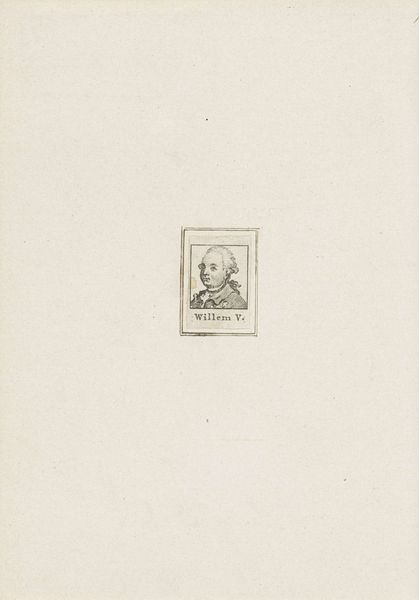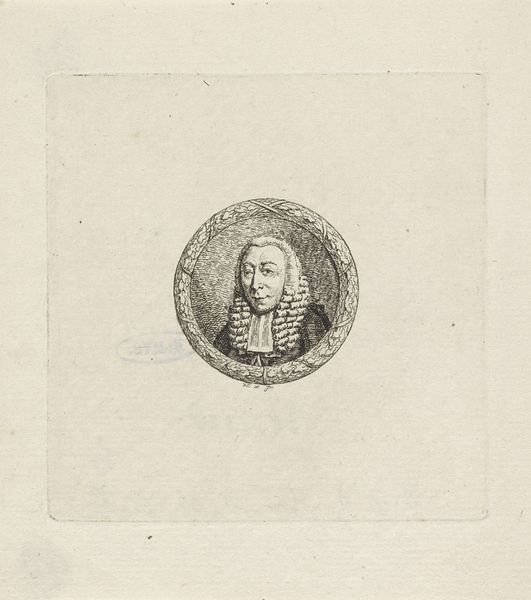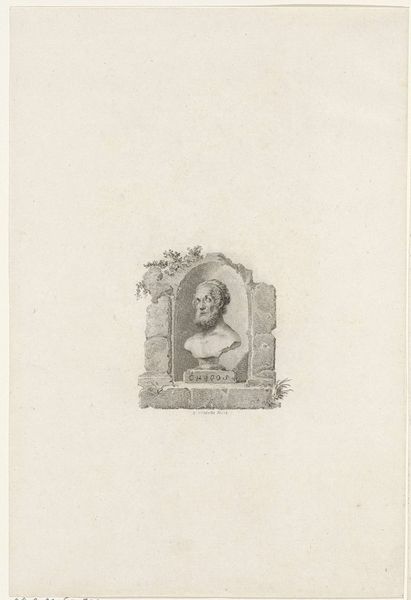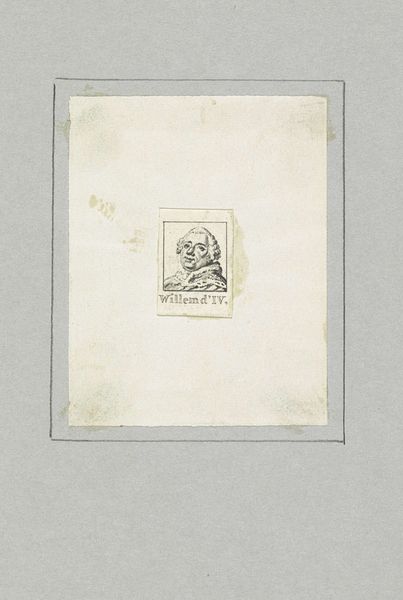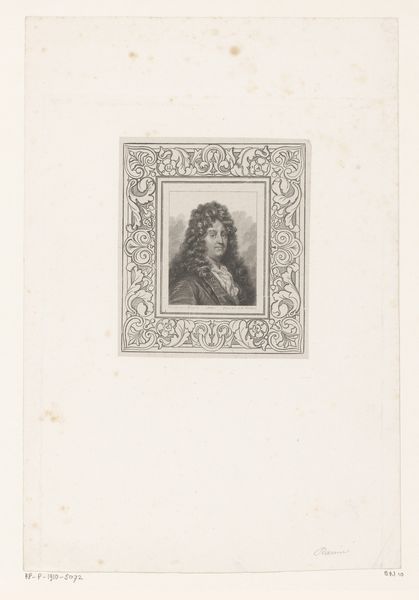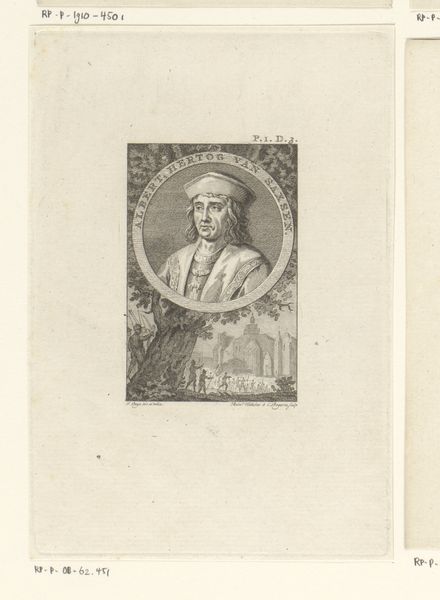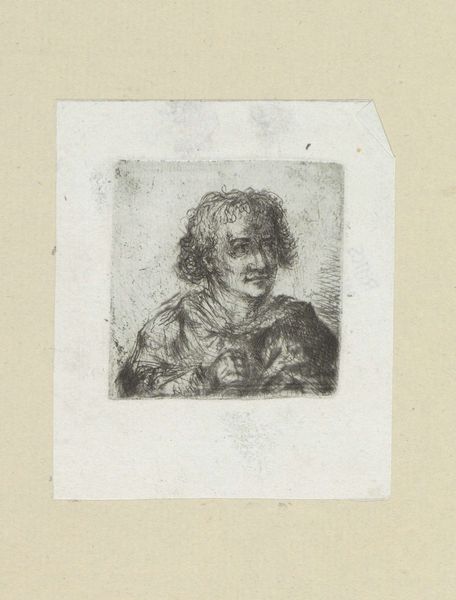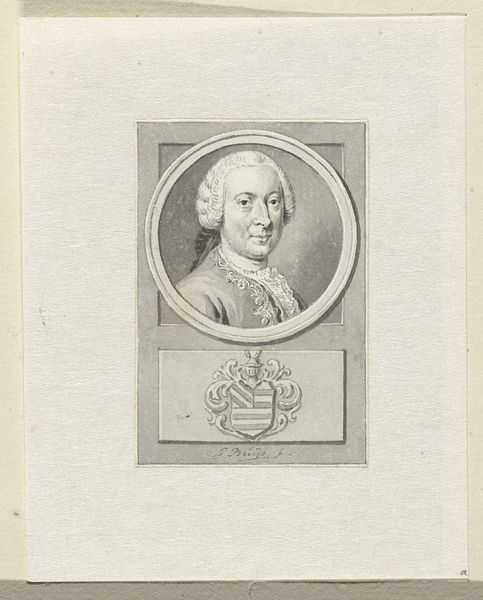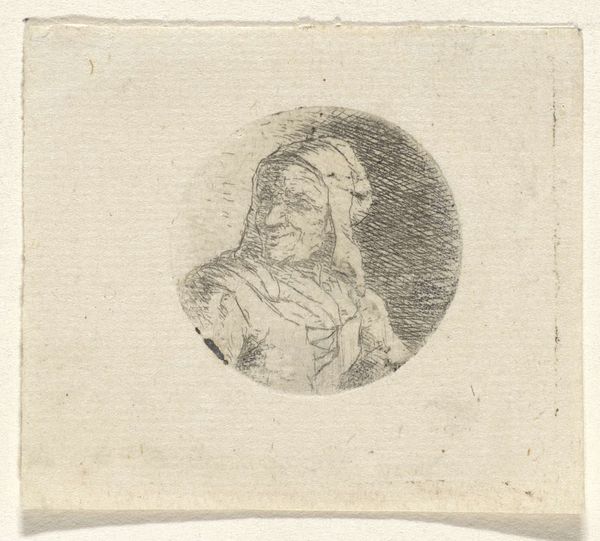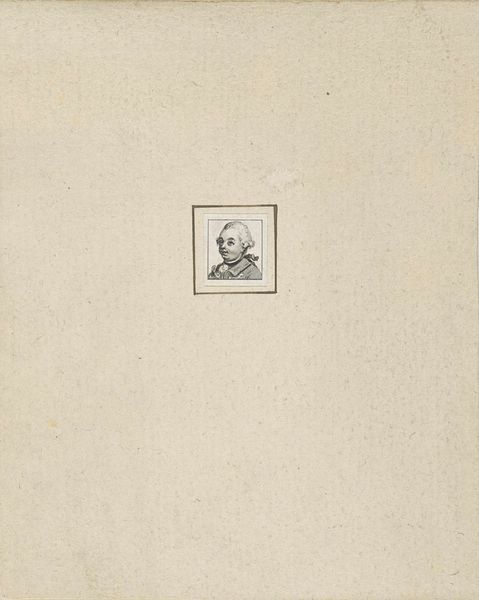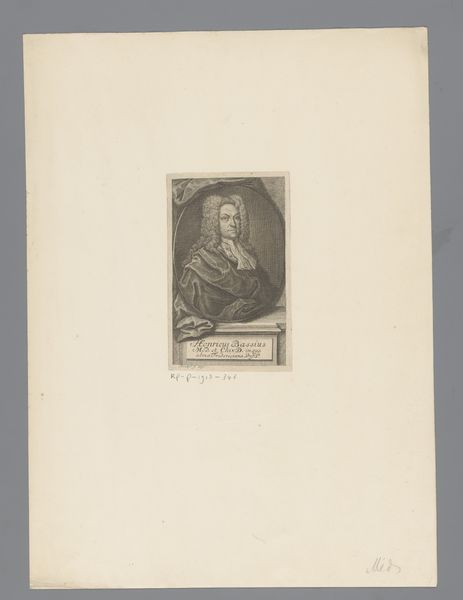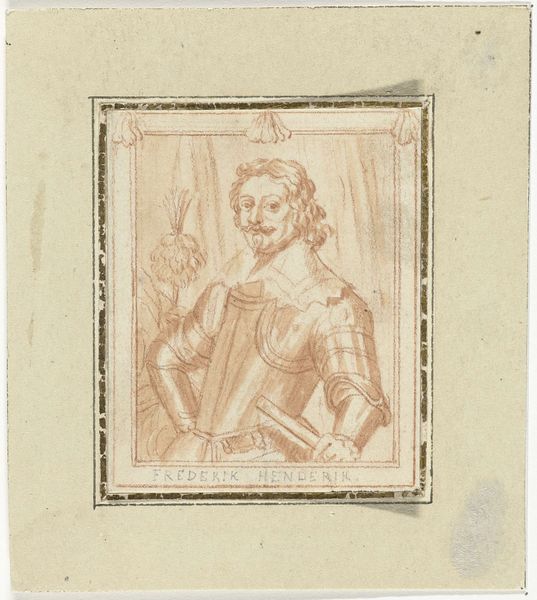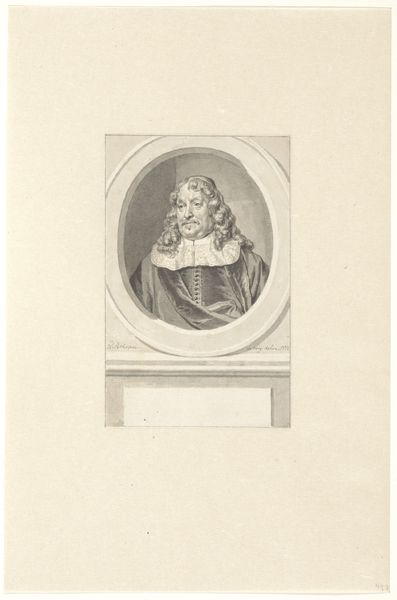
Dimensions: height 19 mm, width 17 mm
Copyright: Rijks Museum: Open Domain
Editor: So here we have an 18th-century engraving on paper of "Portret van Johan Willem Friso, prins van Oranje-Nassau," currently housed in the Rijksmuseum. It's a pretty standard Baroque portrait, but the almost severe geometry surrounding the portrait makes it unique, almost unsettling, doesn’t it? What's your interpretation of this work? Curator: What strikes me most is the portrait's encapsulation within rigid, squared frames. The outer, irregular one especially. It is evocative, suggesting confinement or perhaps a meticulously curated public image. The square can often symbolize structure, rationality. What does it say, do you think, to box the prince within such a construct, given the era’s expectations of powerful men? Editor: Maybe it's about control – controlling his image, and perhaps even him. Was there something particularly symbolic about the attire Johan Willem Friso wears? Curator: Yes, the armor is important. Armor speaks to both power and vulnerability. Consider how it reflects a cultural memory of chivalry and protection but also serves as a physical barrier, a shell. We have constructed the symbols of the elite class, we create a world where the symbols create cultural understanding that transcends art. The swirling wig and the direct gaze offset some of the armor's heaviness, but does it entirely dispel a sense of guardedness? Editor: No, not really, the contrast only makes the effect stronger. It is like two different approaches in communicating collide into an entirely new symbol! Thank you, I see so many new things now. Curator: It is precisely this collision, between intention and perception, that keeps these images alive, allowing them to speak across centuries.
Comments
No comments
Be the first to comment and join the conversation on the ultimate creative platform.
